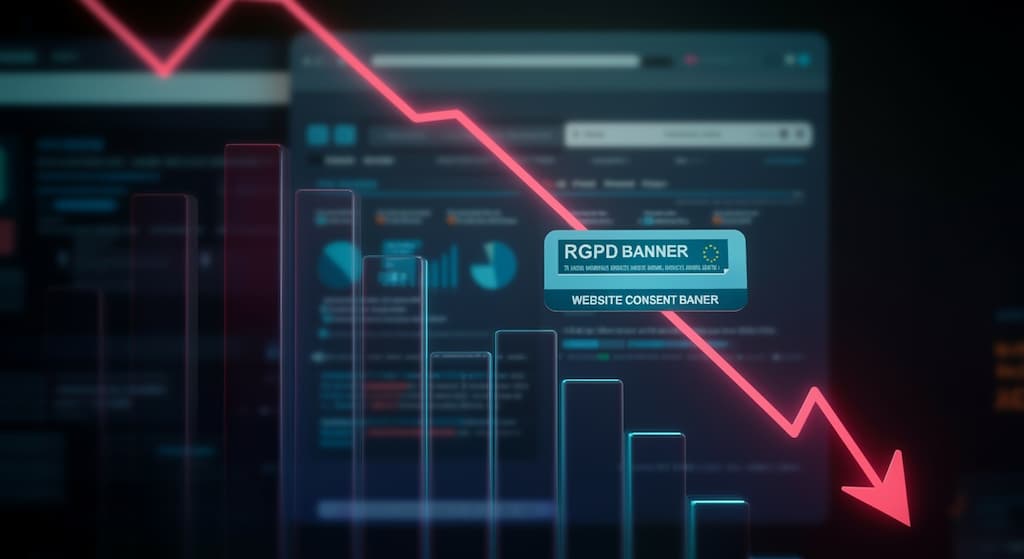
Are you responsible for your company’s digital strategy and have you lost 20 to 50% of your website traffic since the latest GDPR compliance?
How to remedy the drop in the number of visitors to your site by minimising the impact of GDPR compliance measured on Google Analytics?
What is GDPR (General Data Protection Regulation)?
It is a regulation of the European Union adopted on April 27, 2016, and applicable by the 27 Member States of the European Union from May 25, 2018. This regulation strengthens the protection of the personal data of Internet users.
What is the latest GDPR compliance applicable from the 1st of April 2021?
There was a first tightening of the rules in October 2020, then a second on April 1, 2021. This change is problematic for users and company managers:
Unlike the GDPR cookie acceptance banner of May 2018, Google Analytics tracking is no longer triggered by default at the start of the user’s visit since April 2021. It is triggered as soon as the user “opts-in”: i.e. they must accept cookies via the new GDPR banner set up by the rule of April 1, 2021. Since this new rule, the possibility of refusing consent is mandatory on the banner. The consequence is immediate: a significant drop in traffic is recorded. It is important to know that the collection of audience cookie consents has a lifespan of 13 months and a retention period for the information collected for a maximum of 25 months.
Should the “number of visits” KPI be abandoned on dashboards?
The solution to have the exact data once again for this KPI is to directly host a statistics solution on its own server, subject to anonymising the data collected. The best known is Matomo (formerly Piwik). It is much less successful than its famous competitor. But, by comparing the data of the two tools, it should finally be possible again to precisely measure the number of visitors and thus to deduce the conversion rate.
How do I encourage the user to click on my GDPR cookie acceptance banner?
A few User Experience (UX) tips to consider:
- Opt for a pop-up banner that is superimposed on the content rather than a header or footer that presents no obstacle to the readability of the article.
- Under the pop-up banner, darken the background to 50% to highlight the pop-up.
- The rightmost button must be the one we want people to click on, in this case “I accept”.
- Put this accept button in a different style to highlight it.
How will Google improve Google Analytics and Google Chrome to be compliant?
Currently Google Analytics Universal tracks visitors’ IP addresses and shares personal data for advertising purposes. The release of Google Analytics on October 4, 2020 made it possible to anonymise IP addresses, but this is not enough to be completely legal.
To be fully compliant with the GDPR, Google is working on a new way of collecting data, a project called “The Privacy Sandbox”. It will no longer be a question of analysing the data collected individually but by groups of individuals called “cohorts”. This alternative to third-party cookies will no longer be individually identified and will overcome this new regulation.
The code name is FloC (Federated Learning of Cohorts), it will probably be integrated in 2022 in a new version of Chrome (nearly 60% of the market share), which would announce the stopping of cookies on this browser…
Nicolas Dedieu